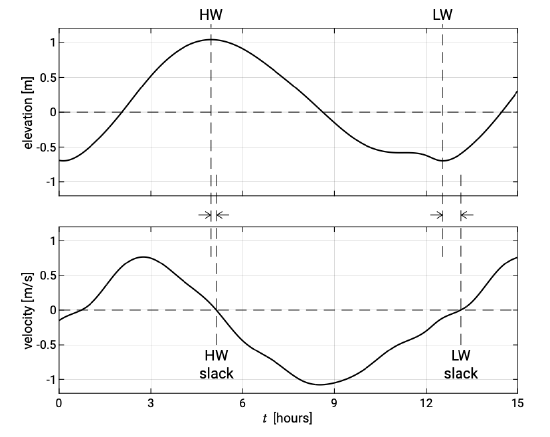5.7.1: Definitions
- Page ID
- 16335

The vertical rise and fall of the water level is called the vertical tide or simply tide. High tide means high water levels, whereas low tide means low water levels (see Fig. 5.52). The rising period is the time it takes for the water level to get from the lowest elevation to the highest elevation, the falling period is the time it subsequently takes to reach the lowest level. The associated horizontal movement back and forward is the horizontal tide or tidal current. We speak about flood currents if the current velocity is in the tidal wave propagation direction. Ebb currents are directed against the propagation direction.
Although this seems clear, there is the danger of confusion. Ebb or ebb tide or ebb period may be used to indicate falling water levels as well as ebb currents. Due to the complex phase relationship between vertical and horizontal tide (see Sect. 5.7.2 and further), a falling tide does not necessarily coincide with ebb currents. To avoid any confusion, we use the words ebb and flood solely to refer to the horizontal tide.
Slack water is the name used for tidal flow reversal. We will see in Sect. 5.7.2 that the velocity generally leads the surface elevation in shallow water. This implies that flow reversal from ebb to flood occurs around low water and is therefore called low water slack (see Fig. 5.52). High water slack around high water occurs for flow reversal from flood to ebb. The term slack water period refers to the duration of slack water (i.e. the period of time during which current velocities are below some threshold)


